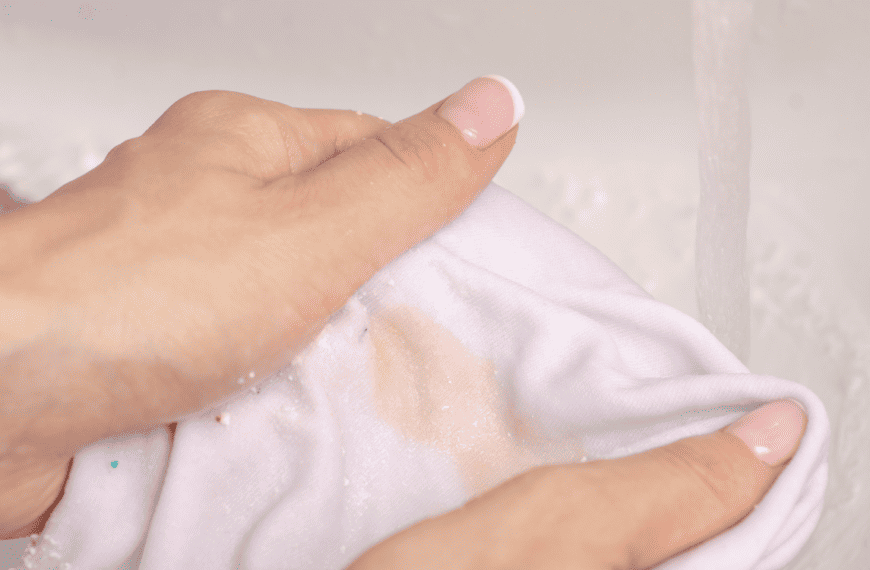Tar is, thankfully, a mess we don’t regularly encounter. It’s sticky, stubborn, and distinct from many everyday stains that demand quick action and the typical DIY solutions. Try the same approach with random road or roofing tar that you would with an average dirt mark, and it can often either be ineffective or make the stain worse.
Certain classic cleaners in your lineup will work in the tar stain removal process. But in many cases, it can take some unconventional and often counterintuitive techniques to remove tar in its entirety. Save time, effort, and, most importantly, your wardrobe by following our guide on how to get tar out of clothes!
Does Tar Come Out of Clothes?
Tar is an oily, viscous substance consisting of hydrocarbons pulled from materials like coal, wood, or, in asphalt’s case, petroleum. In removing it from clothing, a helpful and easy-to-follow cleaning rule is “like dissolves like”.
Several novel DIY cleaning options fit the bill. Non-polar hydrocarbons are in diesel, gasoline, and various vegetable oils, with the less viscous substances generally showing better solubility. From the medicine cabinet to the pantry, you likely have at least a few decent tar removers at home that can boost your chances of eliminating stains by the time your clothes come out of the washing machine.
How to Remove Tar Stains From Clothes
Summary
- Harden the stain with ice, and scrape away as much tar as possible with a dull knife
- Pre-treat the tar stain by scrubbing in dish detergent or a liquid enzyme laundry detergent with a soft-bristled brush
- Wash the clothing in the hottest water allowable according to the garment’s care label
Step 1: Harden the Tar Spots
Fresh, wet tar will potentially smear across the fabric if you try to wipe or scrub it away. You can usually remove tar from clothing faster and more effectively when you pull the most substantial sections off in congealed chunks. Any cleaning solution used after that will better penetrate the stain and lift it in less time.
Harden fresh stains with a plastic bag filled with ice cubes. Once hardened, gently scrape as much tar as possible with a plastic butter knife, spoon, credit card, or another dull tool. If the stain is thin with no perceptible chunks, you can skip this step and try a stain treatment.
Tip: If you can’t toss some ice cubes in a bag to freeze the stain, use a bag of frozen vegetables, or put your garment in the freezer until the tar solidifies.
Step 2: Apply a Stain Treatment
Use a DIY or commercial prewash stain remover to remove as much tar as possible and maximize your chances of getting the stain out in one run through the washing machine. Like many oil-based marks on clothing, like bacon grease and lipstick stains, tar comes off easiest with a heavy-duty laundry detergent or dish liquid. With some scrubbing, these solutions can often completely remove tar stains before the garment goes in the wash.
Apply a few drops of detergent to the stain. Tamp the stain with a paper towel or scrub in a gentle circular motion with a soft-bristled brush or old toothbrush until the stain lifts. Do not use a highly alkaline or enzymatic detergent on natural materials, like wool or silk. Instead, opt for a dry-cleaning solvent, or take them to the dry cleaner.
Alternatively, you can use vegetable oil to loosen the tar. Drizzle a little oil on the stain and rub it in. Doing so will break down the tar and create a stain that is easier for the detergent to extract. Check out this video to see how oil and soap can work in tandem to remove a tar stain.
Alternative Tar Stain Pre-Treatments
If you can’t pre-treat the stain with laundry soap, dish liquid, or cooking oil, there are still plenty of alternative cleaning methods to try. Apply a small amount of any of the following prewash stain removers to cover the stain, and work it in with a soft brush or paper towel:
- Rubbing alcohol (do not use on acetate or acrylic)
- Nail polish remover or acetone (do not use on acetate, wool, and other natural fibers)
- Baby oil
- Petroleum jelly (i.e. Vaseline)
- Baking soda and water paste
- Citrus cleaner
- Goo Gone (do not use on silk, leather, or suede)
- Stain removers such as Shout
You may need to scrub your stain remover for several minutes and apply some elbow grease to make noticeable gains. If the stain remains after using your initial solution, switch to a different cleaning option on this list to continue fighting it.
Step 3: Wash the Clothing and Air Dry
After removing the tar stain with your pre-treatment, wash the garment in the hottest water it can handle according to the care label. Use an enzyme laundry detergent for synthetic fabrics and cotton, or pull out your simple, non-toxic homemade detergent.
Avoid using a harsh detergent on wool and other delicate materials. Check the tag, and when in doubt, opt for a gentler solution like Woolite or get help from a professional cleaner.
After it comes out of the washing machine, check the clothing for any remaining marks that may require additional treatment. You may need to soak the fabric in an oxygen bleach bath to make a tough stain disappear completely. If you can’t see the tar stains, air dry the garment and check that the dried fabric doesn’t have a lasting mark.
Does WD-40 Remove Tar From Clothes?
WD-40 can loosen tar stains to a certain extent. Due to its flammability and added handling precautions, it isn’t the safest solution to remove tar from clothing. Likewise, solvents like gasoline, diesel, paint thinner, and mineral spirits are effective yet relatively risky, making them a last-ditch option at best.
Does Dawn Dish Soap Remove Tar?
Dawn dish soap is an excellent tar remover choice right out of the gate. Its mild, pH-neutral formula is safe on most delicate materials. When you put in the time and effort to work the spot, you can often break down tar stains enough to ensure they come out completely in the wash.
Will Hydrogen Peroxide Remove Tar?
Many swear by 3% hydrogen peroxide for removing tough stains, and it’s certainly worth a shot on a leftover tar spot. You can use hydrogen peroxide as an oxidizing booster for other grease-cleaning solutions. Combine it with dish liquid to scrub out tar spots, or mix it into a paste with baking soda to leave on the stain for several minutes before scrubbing it out.
Does Vinegar Dissolve Tar?
Vinegar is a safe yet effective household cleaner, but cleaning oil and tar stains is not its strong suit. As a polar solution, it doesn’t easily mix with or non-polar substances. You may see minor bits of staining fall away, but you won’t see any significant changes in the affected area. Your best bet for removing tar is to use one of the prewash stain removers above, wash in hot soapy water, and air dry to ensure the stain is completely gone.
What Solvent Breaks Down Tar?
As mentioned earlier, tar is an oily substance consisting of hydrocarbons pulled from materials like coal, wood, or petroleum. With hydrocarbons being non-polar molecules, we’ll want a similarly non-polar solvent to dissolve tar and lift it from the clothes. Since water and many other cleaners, like vinegar, are polar, we can’t simply use them to rinse the stains away.
Certain substances have polar and non-polar characteristics, such as detergent and rubbing alcohol, allowing them to dissolve broad assortments of molecules, including tar. Otherwise, solutions with a strictly non-polar nature can dissolve these unique stains.









